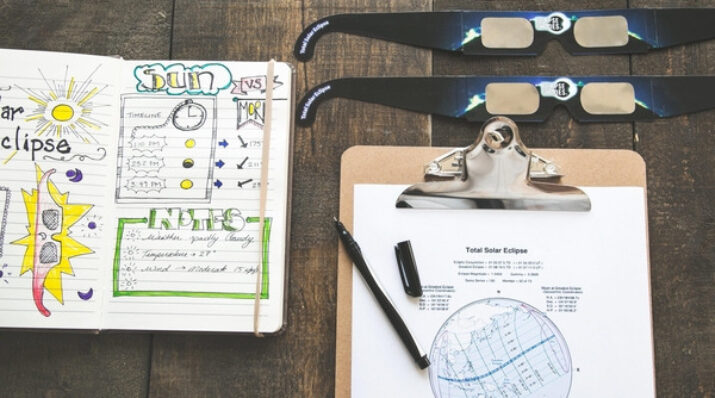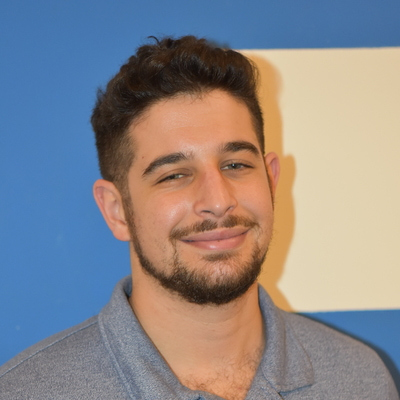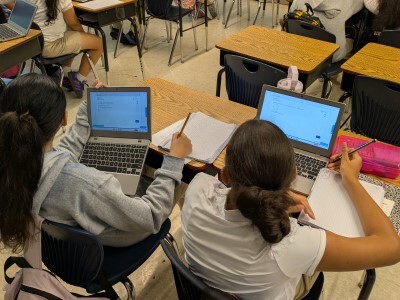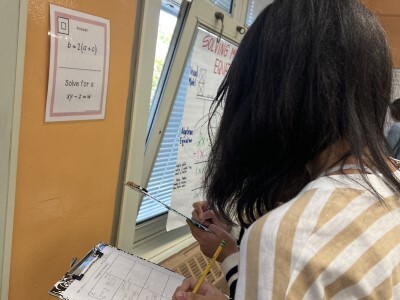How Self-Pacing Improves Students’ Academic Achievement and Self-Confidence
Topics

We’ve all had the experience of truly purposeful, authentic learning and know how valuable it is. Educators are taking the best of what we know about learning, student support, effective instruction, and interpersonal skill-building to completely reimagine schools so that students experience that kind of purposeful learning all day, every day.
When we as educators require all students to work at a predetermined pace irrespective of their needs, we decide to value speed over mastery.
All great teachers recognize that each student is unique. Every child arrives at your classroom with varying academic abilities, social and emotional skills, passions, and learning styles. To meet the needs of their students, most teachers differentiate their curriculum through the content, process, and products of each lesson. These adjustments are time consuming and complicate both the classroom structure and evaluation of learning. And while they can have profound impacts on student achievement and satisfaction, none of them addresses the most stifling constraint: pacing.
Remember, experience builds confidence: you can tell a student they are capable, but they will not believe it until they can see the fruits of their work.
By requiring all students to work at a predetermined pace irrespective of their needs, we choose to value speed over mastery. As a result, academic achievement and confidence decrease while anxiety increases. The solution is to develop a classroom model that empowers students to work at their own pace.
Improve Academic Achievement by Prioritizing Mastery Over Speed
Before implementing self-pacing in my classroom, I followed a traditional model where I used lectures to teach a new lesson each day. I scored the assignments and continued moving forward at the same pace regardless of whether students mastered the material. Unfortunately, what I did not fully understand at the time was that only a small percentage of my students were actually learning. The majority of them had disengaged because they either did not understand the content or found it too easy.
Students who do not control their own pace have limited control over whether they master the material. In many cases, they find themselves chasing but never achieving mastery. They may never exhibit a full understanding of any of the skills they are exposed to.
Through self-pacing, you can ensure that every student experiences authentic mastery. Every week students will begin and end their learning journey by acquiring new skills. They may not always keep up with your unit plan, but they are actively mastering content. Self-pacing also provides struggling students with the support and time they need, while allowing their more advanced peers to skip ahead to more challenging material.
Decrease Student Anxiety and Rebuild Confidence
The primary source of students’ classroom anxiety is the pressure to keep up. Imagine for a minute that you are a student again and have been introduced to a new concept. You have a 45-minute window of time to learn it; you work hard to learn the material and make a lot of progress. However, just before achieving mastery you are told that you have to move on. You are then told that you need to learn the next skill that builds directly off the one you never fully understood.
Naturally, you have trouble understanding the new content because you are missing essential prerequisites. You feel confused and embarrassed because regardless of how hard you work, you are reminded that you have only a minimal understanding of the content. Now you become petrified of being called out in class because you do not want your skill gaps to be exposed in front of your peers. Imagine this happens every single day—that is the classroom experience for many of our students.
The consequence of this structure extends far beyond academic achievement. This pattern leads to a spike in anxiety and an erosion of student confidence. Remember, experience builds confidence: you can tell a student they are capable, but they will not believe it until they can see the fruits of their work. If a student rarely gets to experience the joys of mastery, they will start questioning whether they are capable of understanding the material. Over time, their self-belief erodes. This dynamic diminishes their confidence and exacerbates their skill gaps, confirming their fear that they do not belong in the class.
In a self-paced classroom, everyone always knows they can pick up where they left off; the content feels accessible, and progress is attainable. As a result, students experience a real sense of accomplishment. This belief in their capacity for excellence opens the door for them to flourish and explore a passion for content they never knew existed.
Related Articles
Benefits of Self-Pacing in Skills-Based, Hands-On Classes - These six benefits to self-pacing in hands-on learning found in a family and consumer sciences course can also happen in CTE, project-based academic courses, and other hands-on learning opportunities.
Self-Pacing: The Key to Differentiating Effectively for All Learners - By restructuring their classrooms to transfer ownership from the teacher to the learner, these teachers discovered that the most effective method to differentiate was clear: self-pacing.
Moving at Your Own Pace - From NGLC's Practitioner's Guide to Next Gen Learning, get the evidence behind “moving at your own pace” and examples of this instructional move in practice.




